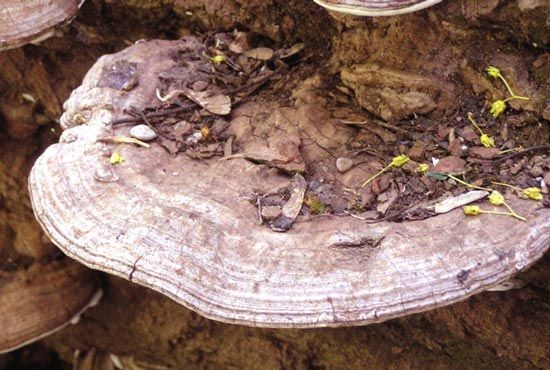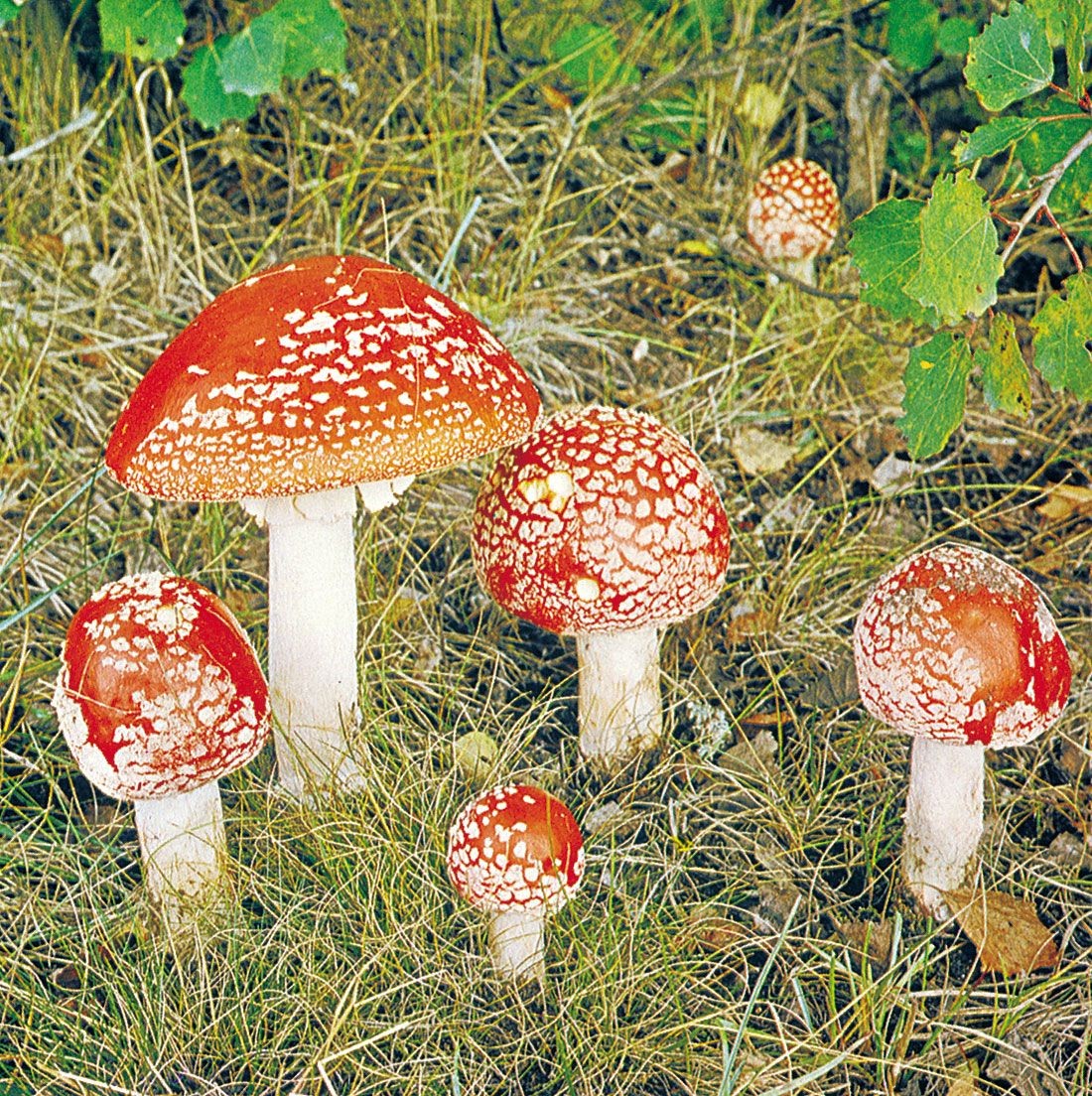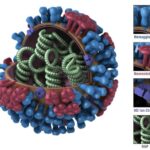What Is Fungi? Fungi represent a diverse kingdom of eukaryotic organisms, including yeasts, molds, mushrooms, and more, playing vital roles in ecosystems and human life. At WHAT.EDU.VN, we aim to provide clear and accessible information about fungi and related topics. Explore the fascinating world of mycology, fungal biology, and their impact on our world with us, as well as related information on fungal classification, fungal ecology, and fungal applications.
1. Understanding the Fungal Kingdom: What is Fungi?
Fungi are eukaryotic organisms, meaning their cells contain membrane-bound organelles and a defined nucleus. They were once classified as plants but are now recognized as a distinct kingdom due to their unique structural and physiological characteristics. Fungi lack chlorophyll, the pigment that allows plants to perform photosynthesis, and they have cell walls made of chitin, a substance also found in the exoskeletons of insects.
1.1. Key Characteristics of Fungi: Defining What is Fungi
- Eukaryotic Structure: Like animals and plants, fungal cells have a nucleus and other complex organelles.
- Cell Walls: Unlike plants, fungi have cell walls composed of chitin, a strong and flexible polysaccharide.
- Heterotrophic Nutrition: Fungi are heterotrophic, meaning they obtain nutrients from external sources. They secrete enzymes to break down organic matter and then absorb the resulting molecules.
- Hyphal Growth: Most fungi grow as thread-like filaments called hyphae, which collectively form a network called a mycelium.
- Spore Reproduction: Fungi reproduce primarily through spores, which are lightweight and easily dispersed by wind, water, or animals.
1.2. Types of Fungi: Exploring What is Fungi
The fungal kingdom is incredibly diverse, with over 144,000 known species and many more yet to be discovered. Fungi can be broadly classified based on their morphology, reproduction, and ecological roles.
- Yeasts: Single-celled fungi that reproduce by budding or fission. They are essential in baking, brewing, and various industrial processes.
- Molds: Filamentous fungi that grow on various substrates, often causing spoilage of food and materials. Some molds are used in the production of antibiotics and other valuable compounds.
- Mushrooms: Macroscopic, fleshy fungi that are typically found above ground. They are a popular food source and play important roles in forest ecosystems.
- Rusts and Smuts: Plant pathogens that cause significant agricultural losses. They are obligate parasites, meaning they can only survive on living plant tissues.
- Lichens: Symbiotic associations between fungi and algae or cyanobacteria. The fungus provides structure and protection, while the alga or cyanobacterium provides food through photosynthesis.
- Mycorrhizae: Symbiotic associations between fungi and plant roots. The fungus enhances nutrient and water uptake for the plant, while the plant provides the fungus with carbohydrates.
2. The Importance of Fungi: What is Fungi’s Role?
Fungi play critical roles in ecosystems and have significant impacts on human society. Their ecological functions include decomposition, nutrient cycling, and symbiotic relationships with plants and animals. Fungi are also used in various industrial processes, food production, and medicine.
2.1. Ecological Roles of Fungi: What is Fungi’s Impact on the Environment?
- Decomposition: Fungi are primary decomposers, breaking down dead organic matter and recycling nutrients back into the ecosystem. They are particularly important in decomposing lignin, a complex polymer found in plant cell walls.
- Nutrient Cycling: By breaking down organic matter, fungi release essential nutrients such as nitrogen, phosphorus, and potassium, which are then available for plants and other organisms.
- Symbiotic Relationships: Fungi form symbiotic relationships with plants (mycorrhizae) and algae or cyanobacteria (lichens), enhancing nutrient uptake and providing protection.
- Food Webs: Fungi serve as a food source for various animals, including insects, nematodes, and mammals. They also play a role in the diets of humans, with mushrooms being a popular culinary ingredient.
2.2. Industrial and Economic Importance: What is Fungi Used For?
- Food Production: Fungi are used in the production of various foods, including bread, cheese, beer, wine, and soy sauce. Yeasts are essential for fermentation, while molds are used to ripen certain cheeses.
- Pharmaceuticals: Fungi are a source of many important drugs, including antibiotics (e.g., penicillin), immunosuppressants (e.g., cyclosporine), and cholesterol-lowering agents (e.g., statins).
- Enzymes: Fungi produce a wide range of enzymes that are used in various industrial processes, including textile production, paper manufacturing, and biofuel production.
- Bioremediation: Fungi can be used to remove pollutants from the environment through a process called bioremediation. They can degrade or accumulate toxic compounds, such as heavy metals and pesticides.
- Agriculture: Mycorrhizal fungi are used in agriculture to improve plant growth and nutrient uptake. They can also enhance plant resistance to drought and disease.
3. The Structure and Growth of Fungi: What is Fungi Made Of?
Fungi have a unique structure and growth pattern that distinguishes them from other organisms. Their bodies are typically composed of thread-like filaments called hyphae, which collectively form a network called a mycelium.
3.1. Hyphae and Mycelium: What is Fungi’s Building Blocks?
- Hyphae: Individual filaments that make up the body of a fungus. Hyphae can be septate (divided by cross-walls) or coenocytic (lacking cross-walls).
- Mycelium: A network of hyphae that forms the vegetative body of a fungus. The mycelium is typically hidden within the substrate, such as soil, wood, or food.
- Cell Walls: Fungal cell walls are composed of chitin, a complex polysaccharide that provides rigidity and protection. Chitin is also found in the exoskeletons of insects and other arthropods.
- Growth: Fungi grow by extending their hyphae through the substrate. They secrete enzymes at the tips of the hyphae to break down organic matter, and then absorb the resulting molecules.
3.2. Reproduction in Fungi: How Does What is Fungi Spread?
Fungi reproduce primarily through spores, which are lightweight and easily dispersed by wind, water, or animals. Fungi can reproduce both sexually and asexually, depending on the species and environmental conditions.
-
Asexual Reproduction: Involves the production of spores without the fusion of gametes. Common methods of asexual reproduction in fungi include:
- Fragmentation: Hyphae break off and form new individuals.
- Budding: A new cell develops as an outgrowth from the parent cell (common in yeasts).
- Spore Production: Specialized structures called sporangia or conidiophores produce spores.
-
Sexual Reproduction: Involves the fusion of gametes (sex cells) to form a zygote. Sexual reproduction in fungi can occur through various mechanisms, including:
- Fusion of Hyphae: Hyphae from two different individuals fuse together, exchanging genetic material.
- Formation of Fruiting Bodies: Specialized structures, such as mushrooms, are formed to produce and release spores.
4. Fungi and Human Health: What is Fungi’s Impact on Us?
Fungi can have both positive and negative impacts on human health. Some fungi are beneficial, producing life-saving drugs and contributing to the production of foods. However, other fungi are pathogenic, causing infections and allergies.
4.1. Beneficial Fungi: How Does What is Fungi Help Us?
- Antibiotics: Fungi are a source of many important antibiotics, such as penicillin, cephalosporin, and griseofulvin. These drugs are used to treat bacterial infections and have saved countless lives.
- Immunosuppressants: Fungi produce immunosuppressant drugs, such as cyclosporine and tacrolimus, which are used to prevent organ rejection after transplantation.
- Cholesterol-Lowering Agents: Statins, a class of drugs used to lower cholesterol levels, are derived from fungi.
- Food Production: Fungi are used in the production of various foods, including bread, cheese, beer, wine, and soy sauce.
- Probiotics: Some fungi, such as certain species of yeast, are used as probiotics to promote gut health.
4.2. Pathogenic Fungi: How Does What is Fungi Harm Us?
- Mycoses: Fungal infections, known as mycoses, can affect various parts of the body, including the skin, nails, lungs, and brain. Common fungal infections include athlete’s foot, ringworm, and yeast infections.
- Allergies: Fungal spores can trigger allergic reactions in some individuals, causing symptoms such as sneezing, coughing, and asthma.
- Mycotoxins: Some fungi produce mycotoxins, toxic compounds that can contaminate food and cause serious health problems. Aflatoxins, produced by certain species of Aspergillus, are potent carcinogens.
- Plant Diseases: Fungi can cause significant agricultural losses by infecting crops and other plants.
5. Classifying Fungi: What is Fungi’s Taxonomic Groups?
The classification of fungi has evolved over time as new information about their evolutionary relationships has been discovered. Modern fungal classification is based on a combination of morphological, physiological, and molecular data.
5.1. Major Phyla of Fungi: What is Fungi’s Main Divisions?
The fungal kingdom is divided into several major phyla, each with unique characteristics and evolutionary history.
- Chytridiomycota: Primitive fungi that are primarily aquatic. They have flagellated spores and are important decomposers.
- Zygomycota: Includes bread molds and other fast-growing fungi. They reproduce sexually through the formation of zygospores.
- Glomeromycota: Form mycorrhizal associations with plant roots. They are essential for nutrient uptake in many plants.
- Ascomycota: The largest phylum of fungi, including yeasts, molds, and morels. They reproduce sexually through the formation of ascospores in sac-like structures called asci.
- Basidiomycota: Includes mushrooms, puffballs, and rusts. They reproduce sexually through the formation of basidiospores on club-shaped structures called basidia.
5.2. Fungal Phylogeny: What is Fungi’s Evolutionary History?
The evolutionary history of fungi is complex and still being investigated. Molecular data has revealed that fungi are more closely related to animals than to plants. The most recent common ancestor of fungi and animals is believed to have been a single-celled, flagellated organism that lived in aquatic environments.
6. Interesting Facts About Fungi: What is Fungi’s Unique Aspects?
Fungi are fascinating organisms with many unique and surprising characteristics. Here are a few interesting facts about fungi:
- Largest Organism: The largest known organism on Earth is a honey mushroom (Armillaria ostoyae) that covers over 2,200 acres in Oregon.
- Ancient Organisms: Fungi have been around for over a billion years. Fossil evidence suggests that fungi were among the first organisms to colonize land.
- Hallucinogenic Properties: Some fungi, such as psilocybin mushrooms, contain psychoactive compounds that can cause hallucinations.
- Bioluminescence: Some fungi are bioluminescent, meaning they can produce light. This phenomenon is thought to attract insects that help disperse spores.
- Zombie Ants: Some fungi can manipulate the behavior of insects, turning them into “zombies.” The fungus Ophiocordyceps unilateralis infects ants and controls their movements, causing them to climb to a high point and attach themselves to a leaf before dying. The fungus then grows out of the ant’s body and releases spores to infect other ants.
7. Common Misconceptions About Fungi: What is Fungi Not?
There are several common misconceptions about fungi, often stemming from a lack of understanding of their biology and ecological roles.
- Fungi are plants: Fungi were once classified as plants, but they are now recognized as a distinct kingdom due to their unique characteristics.
- All fungi are harmful: While some fungi are pathogenic, many are beneficial and play essential roles in ecosystems and human society.
- Mushrooms are the only type of fungi: Mushrooms are just one type of fungi. The fungal kingdom is incredibly diverse, including yeasts, molds, rusts, and many other forms.
- Fungi only grow in dark, damp places: While some fungi prefer dark, damp environments, others can thrive in a wide range of conditions.
- All mushrooms are poisonous: While some mushrooms are poisonous, many are edible and delicious. However, it is important to be able to identify edible mushrooms correctly to avoid accidental poisoning.
8. Frequently Asked Questions About Fungi: What is Fungi Q&A?
Here are some frequently asked questions about fungi:
| Question | Answer |
|---|---|
| What is the difference between fungi and plants? | Fungi lack chlorophyll and have cell walls made of chitin, while plants have chlorophyll and cell walls made of cellulose. Fungi are heterotrophic, obtaining nutrients from external sources, while plants are autotrophic, producing their own food through photosynthesis. |
| What is the role of fungi in the environment? | Fungi are important decomposers, nutrient cyclers, and symbiotic partners with plants and animals. They break down dead organic matter, release essential nutrients, and enhance nutrient uptake in plants. |
| Are all mushrooms edible? | No, some mushrooms are poisonous and can cause serious health problems or even death. It is important to be able to identify edible mushrooms correctly before consuming them. |
| What are some common fungal infections? | Common fungal infections include athlete’s foot, ringworm, yeast infections, and nail infections. These infections can be treated with antifungal medications. |
| How are fungi used in food production? | Fungi are used in the production of various foods, including bread, cheese, beer, wine, and soy sauce. Yeasts are essential for fermentation, while molds are used to ripen certain cheeses. |
| What are mycotoxins? | Mycotoxins are toxic compounds produced by some fungi that can contaminate food and cause serious health problems. Aflatoxins, produced by certain species of Aspergillus, are potent carcinogens. |
| What is mycorrhizae? | Mycorrhizae are symbiotic associations between fungi and plant roots. The fungus enhances nutrient and water uptake for the plant, while the plant provides the fungus with carbohydrates. |
| How do fungi reproduce? | Fungi reproduce primarily through spores, which are lightweight and easily dispersed by wind, water, or animals. Fungi can reproduce both sexually and asexually. |
| What is the largest organism on Earth? | The largest known organism on Earth is a honey mushroom (Armillaria ostoyae) that covers over 2,200 acres in Oregon. |
| What is the relationship between fungi and human health? | Fungi can have both positive and negative impacts on human health. Some fungi are beneficial, producing life-saving drugs and contributing to the production of foods. However, other fungi are pathogenic, causing infections and allergies. |


9. Exploring Fungi Further: What is Fungi Resources?
If you’re interested in learning more about fungi, here are some resources to explore:
- Books:
- “Mycelium Running: How Mushrooms Can Help Save the World” by Paul Stamets
- “Entangled Life: How Fungi Make Our Worlds, Change Our Minds & Shape Our Futures” by Merlin Sheldrake
- “Mushrooms Demystified” by David Arora
- Websites:
- Mycological Society of America (mycology.org)
- North American Mycological Association (namyco.org)
- “WHAT.EDU.VN”
- Online Courses:
- Various online platforms offer courses on mycology and mushroom cultivation.
10. Call to Action: Still Have Questions About What is Fungi?
Are you curious about the intricate world of fungi? Do you have more questions about their role in the ecosystem, their impact on human health, or their fascinating diversity? Don’t hesitate to ask! At WHAT.EDU.VN, we’re dedicated to providing you with clear, accurate, and accessible answers to all your questions.
We understand the challenges of finding reliable information quickly and the frustration of unanswered questions. That’s why we offer a free question-and-answer platform where you can connect with knowledgeable experts and receive timely responses. Whether you’re a student, a researcher, or simply someone with a curious mind, WHAT.EDU.VN is here to help you explore the wonders of the fungal kingdom.
10.1. Why Choose WHAT.EDU.VN?
- Free Access: Ask any question you have about fungi without any cost.
- Quick Responses: Receive answers promptly from our network of experts.
- Easy-to-Understand Information: Our answers are designed to be clear and accessible to everyone.
- Community Support: Connect with other users and share your knowledge.
- Expert Advice: Get insights from experienced mycologists and biologists.
10.2. How to Ask Your Question
- Visit our website at WHAT.EDU.VN
- Click on the “Ask a Question” button.
- Type your question about fungi into the provided form.
- Submit your question and wait for a response from our experts.
We are located at 888 Question City Plaza, Seattle, WA 98101, United States. You can also reach us via Whatsapp at +1 (206) 555-7890.
Don’t let your curiosity fade away! Visit what.edu.vn today and unlock the answers you’ve been searching for. Let us help you delve deeper into the captivating realm of fungi!
